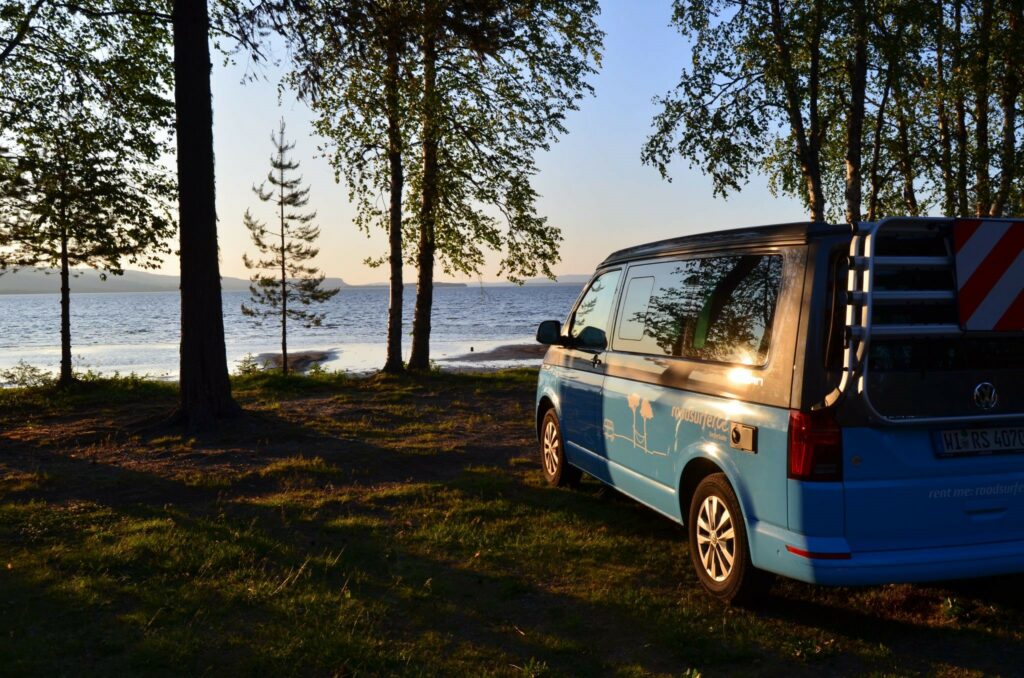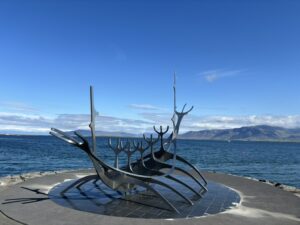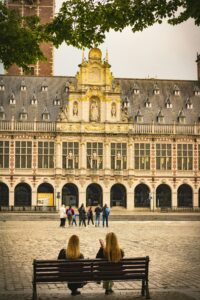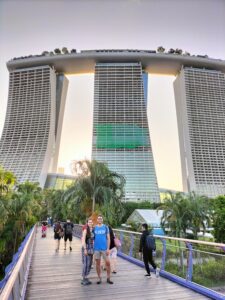Table of Contents
| You haven’t been to Sweden if… FOOD – You haven’t had a breakfast of kanelbullar and tea! ATTRACTIONS – You haven’t dived into the Baltic Sea in the Gulf of Bothnia! SOUVENIRS – You haven’t bought the typical Dalarna wooden horses! |
Introduction
If you’re eager to figure out where to see the midnight sun in Sweden, this article is a must-read! In June 2023, we decided to experience van life with a 5-day itinerary that took us to the far north of the country, to the lovely city of Luleå, where we could witness the spectacular midnight sun.
In this article, you’re going to find all the details you need about the midnight sun in Sweden, from renting the minivan to the steps of the itinerary and the best places to stop for the night! To make this itinerary even richer, write your suggestions in the comments!
If you are interested in discovering the perfect itinerary for 5 days in Swedish Lapland in winter, read our article here. For all other information on how to organise a winter trip to Lapland, click here!
The Swedish right to camp in the wild wherever you want
In Sweden, we’re lucky to have a wonderful right to camp in nature called “Allemansrätten” or “right of public access”. This right is guaranteed to everyone, Swedes and foreigners alike. It allows people to enjoy nature and camp anywhere, as long as they do it responsibly and with respect for the environment.
The good thing about the Allemansrätten is that it allows you to set up a tent or park a camper in any non-private area, such as forests and meadows. The only thing to remember is that the land must not be used for agricultural purposes and you can’t locate too close to private properties.
Of course, there are a few simple rules to follow when camping:
- Do not damage or disturb nature. It is forbidden to collect protected flowers, damage trees or leave waste;
- Do not light fires in areas with high fire risk;
- Please respect the local flora and fauna;
- Maintain good hygiene and leave the area clean when you leave;
- Respect private property and do not camp in areas where it is clearly prohibited.
We also suggest checking the local regulations for the areas you plan to camp in, as there may be some additional restrictions or rules at a municipal or regional level.
Where to rent the van
So, thanks to this special legislation, camping in nature is really easy in Sweden! Whether you choose a camping tent, or whether you have a minivan or a camper at your disposal, you can stop and stay overnight wherever you want, which is great! We decided to rent a super-equipped minivan to give us the maximum flexibility for our travels and overnight stays.
We opted for Roadsurfer, a German company that supplies vans and campers of all sizes to travellers who want to embark on their journey in complete autonomy. The Roadsurfer depot is not located near the airport, to be honest. It’s about 20km away from Arlanda, the capital’s main airport, and you can get there by taxi (fixed rate of €65), with Uber (approx. €30) or by public transport.
This last option is the cheapest, but it will take you a while as you’ll have to take the Arlanda Express from the airport to the village of Upplands Väsby, then bus 524 to Vallentuna and bus 665 to the stop Cedersdal. So, our friendly suggestion is to download the Uber app, choose this option, and you’d be at your destination in about 20 minutes – how great is that?
Roadsurfer address: Okvistavägen 15, 186 40 Vallentuna, Svezia
We chose the Volkswagen T6.1 California Ocean (also known as the “Surfer Suite”) for this trip because it’s just so perfect for us! This lovely camper van has everything you need for a comfortable and relaxing trip! It has a small kitchenette, a cold outdoor shower, four total beds (two inside and two in the automatic folding roof), parking sensors with reversing camera, automatic gearbox, navigator, 40L fridge, outdoor table and chairs, and camping kitchen kit.
In short, your van will already have everything you need to start your adventure! Just a heads-up: it can get pretty chilly at night, especially at higher latitudes, even in the height of summer. So, it might be a good idea to bring some extra blankets and sheets with you!
Where to sleep in Sweden: how to find the best spots
We absolutely loved using Park4night throughout our entire trip! This app is super popular with campers and it’s so handy because it lets you quickly view all the possibilities around you on a map. The app is really helpful because it shows you where the petrol stations, filling stations for fresh water and the release of black water are, as well as paid campsites and free spots surrounded by nature.
Some areas in Sweden are completely free, but they still provide campers with essential services like clean water, showers and toilets.
The midnight sun in Sweden: our 5-day itinerary
Our journey started at the Roadsurfer depot on the 23rd of June and, following a circular route, we completed 9 stages that took us to admire the midnight sun in Lapland before returning to base.
After visiting the towns of Rättvik and Leksand in the historic region of Dalarna, we continued towards Luleå on the fascinating Inlandsvägen (E45), a road that crosses the entire country and offers magnificent natural landscapes of the Swedish heartland. On the way back, we instead headed south along the other major road artery, the E4, which runs along the entire east coast.
In total, we travelled more than 2,100 km in the minivan in 5 days, crossing 9 different counties. Here is the detailed itinerary with a description of each stage, the places to visit and the best places to overnight.
Day 1 – What to see and where to sleep in Dalarna
On the first day we collect the minibus and set off for the Dalarna region. Here the landscape is characterised by numerous lakes, forests and mountains, as well as a deeply rooted traditional and cultural character.
Dalarna is also known for its handicrafts, such as craft beer, Våmhus lace and horse painting (Dalahäst). It is for its natural beauty and cultural traditions that the region attracts many tourists, especially in spring and summer.
We head for the small but charming towns of Rättvik and Leksand, both overlooking the peaceful Lake Siljan. After 3 hours and 20 minutes on the road (294 km), we reach the shores of the lake at Rättvik in the evening: the scenery, especially in the last few kilometres before entering the town, is truly breathtaking, with images of green hills and blue lakes passing one after the other outside our windows.
Both towns are very small and can easily be explored on foot: we take the opportunity to stretch our legs on the long wooden piers that lead out onto the lake.



At this time of the year, at the end of June, the sunlight floods the Dalarna countryside until late in the day, so we take advantage of it to make the most of our first day. The 23rd of June is also the Midsommar, one of the most important festivals in the country: on this occasion, people traditionally gather in the countryside or on the islands of the archipelago to celebrate the arrival of summer.
One of the most important traditions is dancing around the Midsummer Tree, called Midsommarstången, which is decorated with flowers and leaves; women wear traditional clothing, such as white skirts with belts and flowers in their hair, while men wear white shirts and trousers.
Unfortunately, due to the late hour, we were unable to take part in the traditional celebrations. However, during our visit to Leksand we discovered the youth version of this festival, the Raggare subculture.
Raggare subculture emerged in Sweden in the 1950s and is an expression of rebellion, individualism and a love of country music and American supercars. The movement is often associated with nostalgia for the 1950s and a rejection of mainstream modern culture. It is seen as a way for young people to escape the conformity of society and express their identity. They often spend a lot of time and money maintaining and customising their vehicles, such as classic American cars or Swedish cars from the 60s and 70s.
And it was on one of the most important occasions, Midsommar, that we were able to witness such a performance: around a petrol station, we noticed the presence of about a hundred boys and girls in old Cadillacs, made up and completely covered in flowers. The cars were equipped with minibars and very powerful stereo systems, which turned the service area into a real open-air disco, all under the supervision of the Swedish policemen who walked between the cars.
Afterwards, exhausted from the day, we found on Park4night an extremely quiet place to spend the night that is worth recommending:
- Free toilets;
- Free parking;
- Space for 8 campers;
- Free supply of clean water;
- Coordinates 60.712898, 15.0336 (lat, lng) N 60° 42′ 46.43″, E 15° 2′ 0.96″ (lat, lng)
- Address 70, 793 35 Leksand, Sweden
Day 2 – What to see and where to stop along the Inlandsvägen
The next day is extremely demanding in terms of kilometres: 464 km separate us from the town of Leksand to the town of Strömsund in the county of Jämtland, heading north. Naturally, on such a long journey, we made plenty of stops along the way to stretch our legs or eat something.
As soon as we left, we headed towards the town of Mora, where we decided to stop at a shopping centre to buy lunch and some blankets to sleep on, as the first night in the van had been very cold and we were heading further and further north.
After the first 230 km and about 3 hours of travel, we stop for lunch at a truly wonderful spot we found on Park4night: we park our van just a few metres from the water of a small lake, completely immersed in the Swedish forest.

If you are passing here, we strongly recommend you to stop for a short break in this little paradise:
- Free parking;
- Space for 1 camper;
- Coordinates 2.14417, 14.95236 (lat, lng), N 62° 8′ 39.01″, E 14° 57′ 8.49″ (lat, lng)


After a lunch of salmon, cheese, sausages, rye bread and local beer, and a walk in the woods, we take a nap for a few hours to recharge our batteries for the next leg of our journey to Östersund, the capital of Jämtland.
When we are fully recovered, we continue north along the E45 for about 150 km until we reach Östersund, where we arrive in the evening. We park our van and enjoy a short tour of the town for a couple of hours.
Östersund has a population of around 50,000 and is famous for its location on the shores of Lake Storsjön, the country’s fourth largest lake. The surrounding mountains offer a wide range of outdoor activities including skiing, hiking and fishing. Åre, Sweden’s most famous ski resort, is only about a hundred kilometres from the city.
During our visit to Östersund, we had the opportunity to explore the charming old town and take a pleasant walk along the lake. Before ending the day, we stopped for dinner at a lovely restaurant known for its local specialities: the Sir Winston restaurant overlooking Stortorget (the main square).
The restaurant is clearly dedicated to Sir Winston Churchill, who is said to have visited the forests of Jämtland at the beginning of the 20th century to enjoy elk and bear hunting. History aside, we opt for a delicious hamburger, accompanied by a selection of local cheeses and sausages. Let’s not forget to wash it all down with a beer brewed directly by the owners. The taste of each dish is truly exceptional!
After dinner we travel the further 100 km that separate us from Strömsund and our chosen spot for the night. Also in this case the spot was found on Park4night and it turned out to be a truly magical place where we were able to park our van in an area equipped with toilets and showers, all just a few dozen meters from the waters of a lake in the middle of the forest.
These are the most important information for you:
- Toilet 50 SEK;
- Parking 190 SEK;
- Place for 8 campers;
- Free supply of clear water;
- Coordinates 63.97009, 15.85499 (lat, lng), N 63° 58′ 12.32″ , E 15° 51′ 17.96″ (lat, lng)
- Address Flåsjön 833 95 Strömsund, Sweden
Day 3 – Luleå, Gammelstad and Midnight Sun
What to see in Luleå
In the morning we wake up in a good mood and after a short walk on the beach in front of our van, we immediately set off for the city of Luleå, capital of the county of Norrbotten and main centre of Swedish Lapland, located 100 km south of the Arctic Circle.
It takes about 6 hours to cover the 500 km that separate the two legs of our journey: after a quick breakfast in Arvidsjaur, a face-to-face encounter with a reindeer and a moose along the way and a few other stops to stretch our legs and back, we finally reach our destination.
Luleå, with a population of around 46,000, is a modern and fast-growing city on the Gulf of Bothnia, just a few kilometres from the Finnish border. The city is famous for its modern architecture and its coastal location, which offers a variety of outdoor activities such as boat trips and fishing in the summer.
During the long winters, the sea freezes completely and real ice roads are built to reach the many islands of the archipelago by car.
Luleå is also known for its university, the Technical University, which attracts many national and international students, especially in the fields of engineering and information technology.
It was in Luleå that Mark Zuckerberg decided to locate Facebook’s first data centre outside the US, to take advantage of the cold temperatures in these latitudes and keep the servers well cooled.
Visiting Luleå is very simple as its historic center is really small and therefore can be easily explored on foot. After parking our van in the paid car park of Namnlösa gatan, we visit Storgatan (the main street), the imposing city cathedral and its green park.
For lunch time we head towards Södra Hamnplan, one of the most touristic areas of the city, directly overlooking the Bothnian Sea: there we taste a local version of fried pizza and we must say that, despite its uninviting appearance, it was absolutely worth it.
What to see in Gammelstad
In the late afternoon we decide to visit one of the main attractions in the area, the old town of Gammelstad, just a 12-minute drive from Luleå. Gammelstad (“Old Town”) is a picturesque parish village, declared a UNESCO World Heritage Site in 1996, and is known for its well-preserved historic centre.
Around the imposing 15th-century church of Nederluleå, the centre of Gammelstad, 424 small wooden houses were built over time to accommodate the worshippers who flocked to mass from the surrounding countryside and could not return home earlier than sunset (given the few hours of light available).
By the 16th century, however, the sea had receded several kilometres due to the lowering of the tide, and the inhabitants decided to move their activities further east, founding the present-day city of Luleå.
There are several top attractions that can be visited within a couple of hours in Gammelstad, but getting lost in its narrow streets and wandering aimlessly remains the best way to take a trip back in time.
We recommend a visit to Nederluleå Church, one of the largest wooden churches still standing in Sweden; Gammelstad’s Hembygdsgård, an open-air museum that shows what life was like in the village through the centuries; the Old Town Hall, a historic building and former administrative centre of Gammelstad; and the “guesthouses”, wooden houses where people from the surrounding countryside would have gathered during religious celebrations.
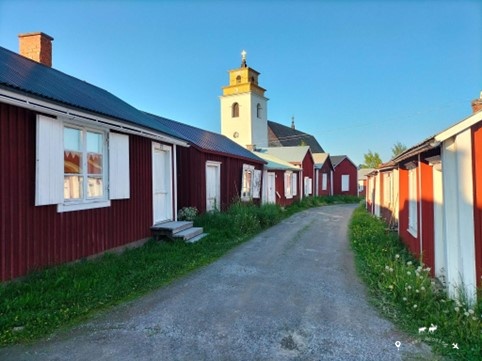
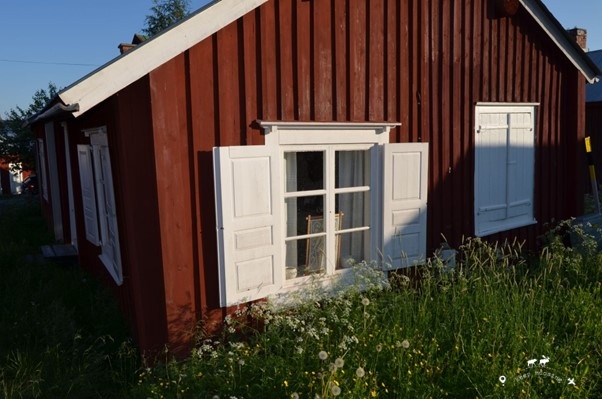
Where to see the Midnight Sun in Luleå and where to park for the night
After visiting the beautiful city of Gammelstad, we return to Luleå for the night and park our van in another beautiful spot, again thanks to Park4night.
This time we can park right in the city’s marina, just a few minutes walk from the city centre, in a wonderful area equipped for campers (Husbilsparkering Luleå) with hot showers, sauna and toilets available (all very clean!). Here is the main information about the site:
- Toilets included in the parking fee;
- Parking 300 SEK;
- Space for 10 campers;
- Free supply of clean water;
- Coordinates 65.580204, 22.158888 (lat, lng), N 65° 34′ 48.73″, E 22° 9′ 31.99″ (lat, lng)
- Address 38 Södra Kungsgatan, 972 35 Luleå, Sweden
After a nice shower, we sit down to eat on one of the many outdoor wooden tables made available by the municipality (in Södra Kungsgatan): salmon, cured meats and cheeses with view of the Gulf of Bothnia!
After dinner, we head to the other side of the city to admire the phenomenon of the midnight sun: during the summer months, in the Arctic and Antarctic regions, the sun does not set completely, but remains visible 24 hours a day, even at midnight.
This is because the Earth’s axis of rotation is tilted in relation to its orbital plane, so that the sun does not dip below the horizon. At this time of year, the days are long and bright, allowing for outdoor activities even late at night.
In about 10 minutes we reach the promenade in front of the Norrbottern Theatre (Norra Strandgatan 3, 972 39 Luleå, Sweden): this is a tourist area directly overlooking the Bothnian Sea, where it is possible to dine in one of the many small restaurants that open during the summer.
From here you can admire the midnight sun, even if the horizon is slightly obscured by clouds.
Day 4 – Heading South: Skellefteå, Umeå and Bettnessand beach
The following morning we set off on our return journey, which will take us from Luleå to the Roadsurfer depot 900 km further south, where we will return our van before catching our flight home. Our first stop on the E4, the road that crosses the whole of Sweden from north to south along the east coast, is Skellefteå, which we visit briefly during the morning.
What to do in Skellefteå
Skellefteå is a city in the county of Västerbotten on the Baltic Sea coast with a population of around 33,000 and is an important centre for the forestry industry. The city is surrounded by beautiful forests and offers many outdoor activities such as hiking, fishing (especially on the Byske River) and skiing.
Our brief visit, mostly for breakfast, includes the town’s Gothic church from the 15th century, a walk along the riverside and Storgatan (the main pedestrian street). If you have more time than we did, we recommend that you also visit the surrounding area of Skellefteå, in particular another of the few remaining examples of parish villages, Lövånger church town, and the Nordanå cultural area, a nature reserve close to the town, which is perfect for immersing yourself in the local artistic and cultural scene.
What to see in Umeå
By midday we reach the city of Umeå, 137 km further south. Umeå is one of the largest cities in northern Sweden and is known as a vibrant and innovative university town. The city’s university is one of the most prestigious in the country and attracts students from all over the world.
Situated on the homonymous river, the city is surrounded by beautiful countryside, rich in forests and Arctic wildlife.
The town centre is very small and we recommend you get lost in Storgatan and all the side streets full of shops and restaurants. The town hall square (Rådhustorget) is very pretty and has a very green park (Rådhusparken) leading down to the river Umeå. Behind the town hall there is another very important shopping street that leads directly to the central station (Rådhusesplanaden).
If you have time, we recommend a visit to the Bildmuseet (Östra Strandgatan 30B), which has a large collection of both local and international contemporary art, and the Scharinska villa (Storgatan 63-65), a symbolic building in the city that you can admire, but only from the outside, and which has housed a private design centre since 2017.
For lunch, we suggest a really nice place at Skolgatan 49, ROST Kaffe i Umeå AB. For approx. €15 per person, you can try delicious vegan dishes accompanied by excellent desserts.
How to get to Bettnessand beach
27 km south of Umeå lies one of the most beautiful beaches in northern Sweden, Bettnessand, and that’s where we headed in the afternoon. Arriving at the end of Sandstrandsvägen, park your car in the large car park in front of the beach and walk a few hundred metres through the forest to the sea.
You will find an unusual scenario for these latitudes: a fine sandy beach, beach volleyball courts, a bar (only open until 4pm) and above all a crystal clear and naturally very cold sea! The peace and tranquillity of this place will make the time spent getting there well worth it!


After a swim in the Gulf of Bothnia, we get into the van and continue our journey south, arriving 330 km later at our overnight stop in the town of Hudiksvall. Nothing romantic or particularly scenic this time, just a practical caravan park to get the necessary hours of sleep before continuing our journey. Here is the info:
- Toilets included in the parking fee;
- Parking 100 SEK;
- Space for 8 campers;
- Fresh water for 50 SEK;
- Coordinates 61.73684, 17.10924 (lat, lng), N 61° 44′ 12.62″ , E 17° 6′ 33.26″ (lat, lng)
- Address: 17 Humlegatan, 824 33 Sweden
Day 5 – What to see in Uppsala
On the last morning, after travelling another 230 km, we arrive in the quiet town of Uppsala, just a few kilometres from our van depot. We decide to stop here, both to have breakfast and enjoy our last moments in Sweden, and because, visiting this place during our first trip in 2010, we left a piece of our heart here.
Uppsala is a city about 71 km north of Stockholm. It is the fourth largest city in the country and has a population of around 230,000. Uppsala is best known for its university, which was founded in 1477 and is one of the oldest in Europe. The city is also famous for its cathedral, Uppsala Cathedral, which dates back to the 13th century and is the largest sacred building in Sweden.
Other attractions include Uppsala Castle, the Linnaeus Botanical Garden and the Gustavianum Museum, which is housed in a university building. Just outside the city is the archaeological site of Gamla Uppsala (‘Old Uppsala’), known for the ruins of ancient Viking burial mounds.
In the city, we recommend breakfast at Güntherska bakery (Östra Ågatan 31, 753 22 Uppsala, Sweden), which will delight you with excellent freshly baked kanelbullar (typical round cinnamon cakes).
Our short visit to the city of Uppsala comes to an end and we head towards the Roadsurfer depot where, in about forty minutes, we can clean and return our beloved minivan!
How much do you spend?
The cost of the 5-day road trip in Sweden, excluding flights, as a couple (always using free accommodation) is:
- Van 5 days Roadsurfer: €535
- Food, fuel and everything else: approx. €350
The total comes to around €900 per couple, to which the flight to/from Stockholm must be added. Naturally, the total cost of the holiday can depend on various factors, such as the period of the year.
What to read before traveling to Sweden
Before our trip to Sweden, we read “Lagom: The Swedish Art of Balanced Living”, a book that helped us dive deeper into Swedish culture and their unique way of life. Lagom is an untranslatable word that embodies the idea of “just enough” or “perfect balance”, a core value in Swedish society that influences everything from work-life balance to personal relationships.
Through this book, we discovered how Swedes live in harmony, respect the environment, and prioritize sustainable well-being. It was an eye-opening read that prepared us for our journey, giving us insight not only into Sweden’s natural beauty but also into how the locals live with a sense of balance and calm. If you’re curious about achieving a more balanced, mindful lifestyle, this book is full of inspiration and will enhance your appreciation of the Swedish experience.
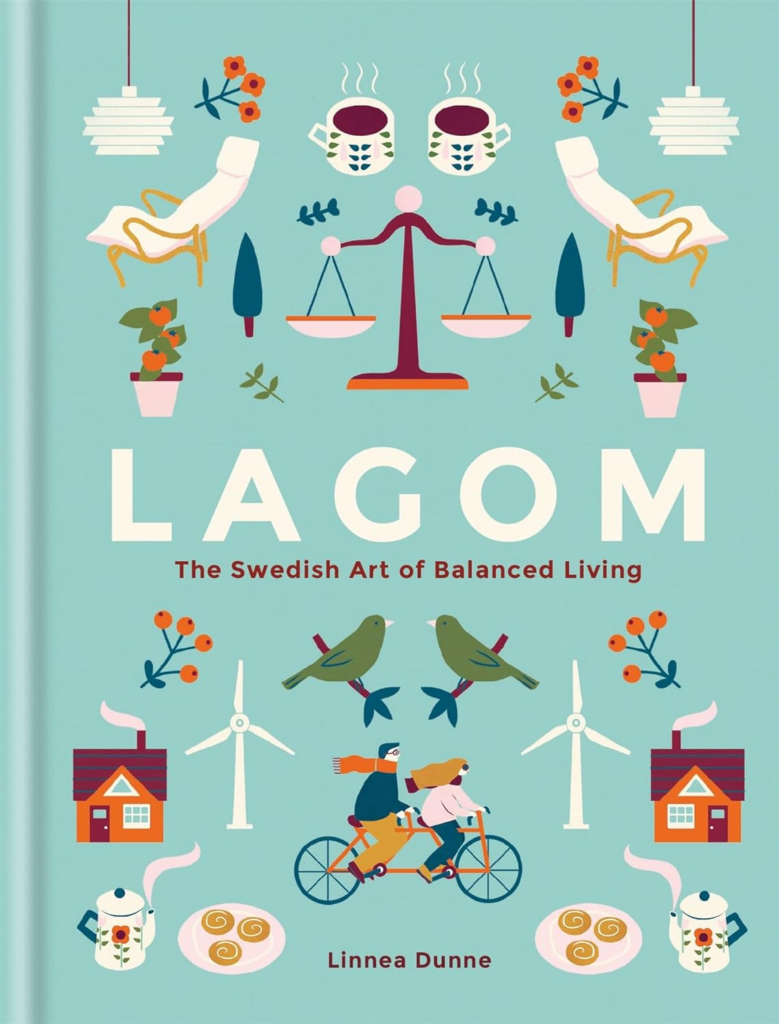
Travel Tips from KeepMoosing
Traveling is exciting, but protecting your data should always be a priority. That’s why we trust Surfshark, a leading cybersecurity company offering tools like VPN, Antivirus, and Alert (a data breach detection system). We highly recommend Surfshark for its versatile VPN, which is perfect for keeping your digital life secure while on the go.
With Surfshark VPN, you can safely use public Wi-Fi networks without worrying about fraud or hacking, ensuring your sensitive information, such as passwords and banking details, stays protected. It also allows you to bypass geographical restrictions, so you can stream your favorite TV shows or access region-blocked websites from anywhere.
We also suggest using Surfshark VPN while planning your trip. It helps you avoid price discrimination by changing your virtual location, often leading to better deals on flights and hotels.
You can buy your subscription here!
Conclusions
This adventure in Sweden is over, but, as always, it inspired us to plan new trips in this beautiful country! If you have any questions, please have a look at the comments section below and we will be in touch with you as soon as possible.
***Some of the links on our blog are affiliate links. By purchasing through these links, you help us support our work at no extra cost to you.***

